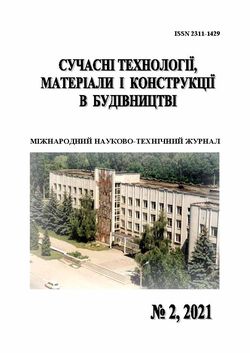APPLICATION OF THE METHOD OF REINFORCING POLYSTYRENE MODELS TO 3D PRINTING OF WALLS MADE OF POLYSTYRENE CONCRETE AND EXAMPLES OF METAL CAST PARTS OF BUILDING FORMWORK
DOI:
https://doi.org/10.31649/2311-1429-2021-2-16-21Keywords:
construction, 3D printing, polystyrene concrete, reinforcement, expanded polystyreneAbstract
An urgent need is to increase the productivity of the construction of both residential buildings and office buildings. One of the driving directions of modern building science is the desire to combine different properties in one material. Science made cold and heavy, but strong concrete light and “warm” by introducing foamed balls-granules of polystyrene polymer into the structure, and this created polystyrene concrete (PSB). Despite the sufficiently high strength for low-rise construction, PSB blocks are quite fragile. In order to avoid cracks in the walls and destruction under the floor panels, they need a monolithic reinforced concrete belt, the manufacture of which leads to unnecessary costs of materials and time. To automate the construction of PSB, methods of 3D printing of walls directly at the construction site are known. Such a new method is considered with polystyrene foaming directly in the current PSB layer by passing an electric current through this PSB layer, which heats this layer, which leads to foaming of polymer granules and acceleration of PSB hardening. This method has been improved by us with a technical solution for reinforcing joints between layers with their additive build-up. This will increase the strength of building structures, and will similarly allow the laying of cables, corrugated sleeves or tubes for electrical wiring or communications in the walls. For the manufacture of metal-reinforced monolithic concrete belts in walls made of PSB under floor panels, partitions, blocks, slabs or panels for flooring, formwork is used, the metal parts of the fasteners of which are debugged to be mass-produced by casting. At the same time, steel nuts for formwork ties, as well as key parts of building frame scaffolding according to the FTIMS NAS of Ukraine technology, are cast on gasified models, as a rule, with cast threads from M16 and larger, which does not require their machining. This is illustrated by examples of cast metal fasteners.
References
Polystyrene concrete. Specifications: GOST 33929-2016. M.: FGUP Staidartinform, 2016. - 20 s. – (Mezhgosudarstvennyj standart).
Patent Russia no. 2739244, IPC: E04B2/02, B33Y30/00, B33Y10/00, B29C64/106. Device and method for the manufacture of heat-insulating walls from polystyrene concrete using a 3d printer. Opubl. 22.12.2020, Byul. № 36.
Molodin V.V. (Sibstrin): "The idea of printing with polystyrene concrete appeared three years ago, and it took 30 years to get to it". URL: https://additiv-tech.ru/publications/vladimir-viktorovich-molodin-sibstrin-ideya-pechati-polistirolbetonom-poyavilas-tri
Polystyrene concrete blocks: characteristics, pros and cons, sizes and prices. URL: https://greensector.ru/strojjmaterialy/polistirolbetonnye-bloki-kharakteristiki-plyusy-i-minusy-razmery-i-ceny.html
Chechuga A.O. Advantages and prospects for the development of AM-technologies in construction // Izvestiya TulGU. Tehnicheskie nauki. 2021. Vyp. 11. – S. 311-314.
Downloads
-
pdf (Українська)
Downloads: 190
Published
How to Cite
Issue
Section
License
Copyright (c) 2021 Володимир Степанович Дорошенко, Олександр Борисович Янченко

This work is licensed under a Creative Commons Attribution 4.0 International License.


